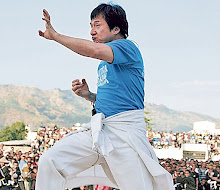
Judo literally means "the gentle way." This ancient martial art makes use of the opponent's strength to overcome him, hence making it possible for a David to throw a Goliath. This popular wrestling form was developed from jujitsu by Jigoró Kanó (1860-1938), a Japanese educator.
In the era of Meiji (1868-1912), Kano Jigoro synthesized the existing schools into what is now an international sport. Judo as a sport was first included in Olympic Games in the year 1964.
According to the International Federation of Associated Wrestling Styles (FILA), judo is among the four main forms of amateur competitive wrestling that is practiced internationally today, the other three of them are Greco-Roman wrestling, Freestyle wrestling and Sambo wrestling.
HISTORY OF JUDO - Originated in Japan.
- Kano Jigoro, a Japanese polymath and educator, was the founder of Judo.
- The word Judo is derived from two words: "ju", which means gentleness, and "do", way or road (the same character as the Chinese "tao").
JUDO KATA There are seven kata that are recognized by Kodokan today: - Randori no Kata (Free practice forms), comprising two kata.
- Nage no Kata (Throwing forms)
- Katame no kata (Grappling forms)
- Kime no kata (Forms of decision)
- Kodokan Goshin Jutsu (Kodokan Self-defence forms)
- Ju no Kata (Forms of gentleness)
- Itsutsu no Kata (The five forms)
- Koshiki no Kata (Ancient forms)
- Seiryoku Zen'yo Kokumin Taiiku no Kata (Maximum-Efficiency National Physical Education Kata)
|
|
JUDO UNIFORMS - White or blue cotton uniforms called Judogi.
- White cotton drawstring pants and a white quilted cotton jacket fastened by a colored belt indicative of kyu or dan rank.
- The jacket is intended to withstand the stresses of throwing and grappling, and is as a result much thicker than that of a karategi.
JUDO BELTS In Ascending Order - White
- Yellow
- Orange
- Green
- Blue
- Brown
- Black
|


0 comments:
Post a Comment